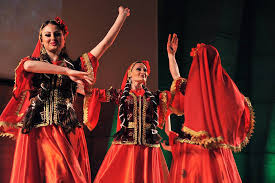Gateway to the Silk Road
The Heart of Central Asia
Uzbekistan, a jewel of the central Asian, is famous not only for its glorious ancient history of Silk Road but also for its architectural materpiece. Cities such as Samarkand, Bukhara, and Khiva are filled with impressive mosques, madrassas, ancient fortresses, and other monuments like the Registan Square and the Ark Fortress. Diverse landscapes are available for outdoor enthusiasts: vast deserts, rolling hills, and mountain ranges. The country's menu includes hefty dishes like plov (pilaf), shashlik (kebabs), and samsa (savory pastries). Uzbekistan's proud heritage, vibrant markets, and warm hospitality make it an exceptional destination for travelers seeking history, culture, and adventure.
Top
Destinations

Samarkand

.png)
.png)
.png)
.png)







